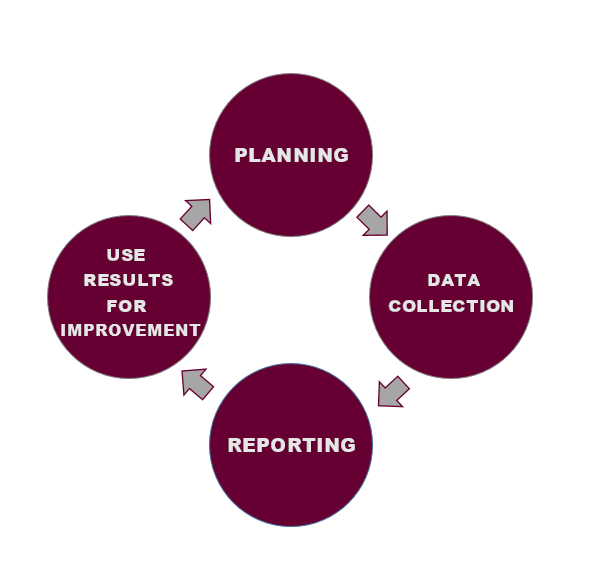Assessment
What is Assessment?
Assessment is the ongoing and systematic process of identifying outcomes and means to measure them, gathering measurements of the outcomes, using the information to make decisions about improvement, and implementing improvements based on the data gathered. The most important aspect of this definition, if emphasis could be drawn to one item, is the use of information to make improvements.
Who is Involved in Assessment at TAMIU?
All undergraduate and graduate degree and certificate programs, educational services, and administrative offices at TAMIU identify expected outcomes and annually assess the extent to which outcomes are met. Assessment results are used to drive continuous improvement, ensuring the institution provides a high-quality education while complying with the SACSCOC Principals of Accreditation.
The Office of Institutional Assessment, Research & Planning supports the annual assessment process and comprehensive review of our programs and offices. OIARP additionally provides ongoing workshops and individualized sessions for faculty and staff. Sessions assist in the facilitation of meaningful assessment cycles to provide useful evidence in making informed decisions to better TAMIU for its stakeholders.
What does the Assessment Process Look Like?

The Assessment Process is divided into four essential stages: planning, data collection, data analysis/reporting, and use of results for improvement. Each phase of the process includes all program faculty (undergraduate and graduate degree and certificate programs) and administrative educational support staff at TAMIU in our assessment efforts, and ensures everyone understands his/her role. The assessment process allows programs/offices to 1) identify which program learning outcomes (PLOs), performance objectives (OBJs) or student learning outcomes (SLOs) will be assessed this academic year and determine how and when those PLOs, OBJs, or SLOs will be assessed, 2) assign responsibility to faculty or staff for data collection (3) analyze the data, and 4) determine what improvements need to be made for the continued success for our students and stakeholders of TAMIU.
Contact
Office of Institutional Assessment, Research, and Planning
5201 University Boulevard, Sue and Radcliffe Killam Library 434, Laredo, TX 78041-1900
Phone: 956.326.2275
We are committed to ensuring accessibility for all visitors to our website. If you encounter any difficulties accessing our PDF documents or need materials in an alternative format, please contact Pat Martinez at pmartinez@tamiu.edu. We will be happy to assist.